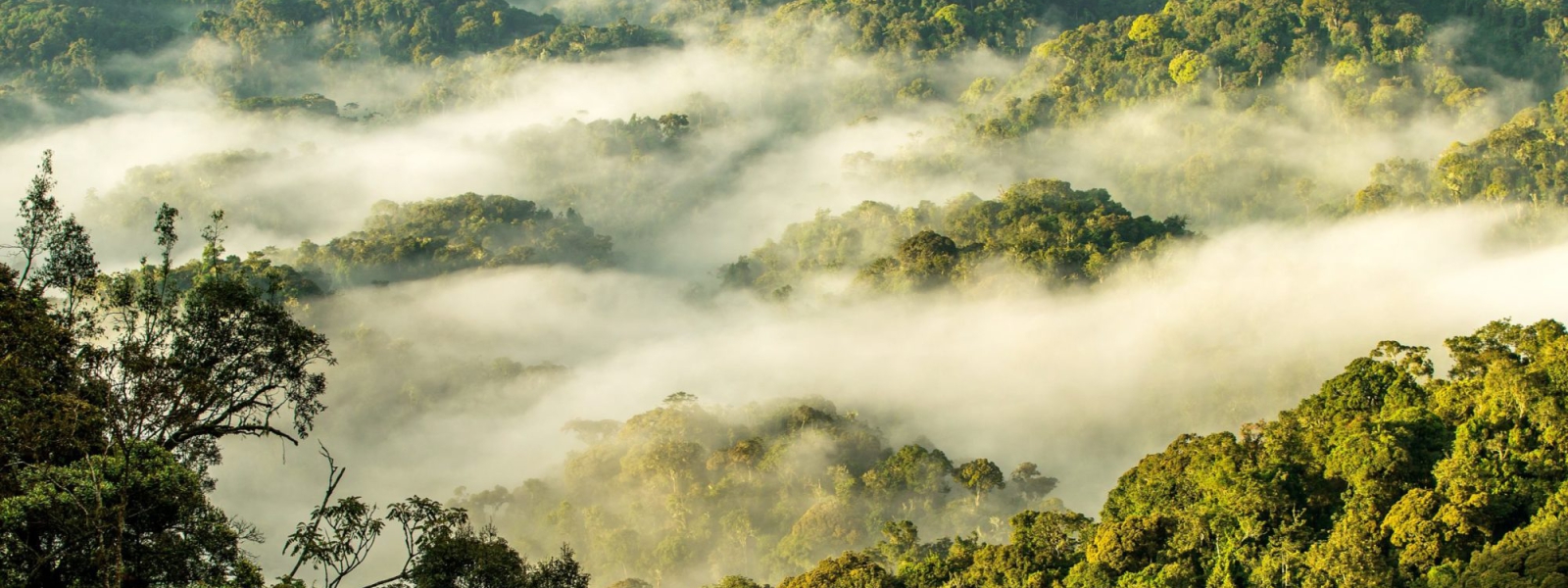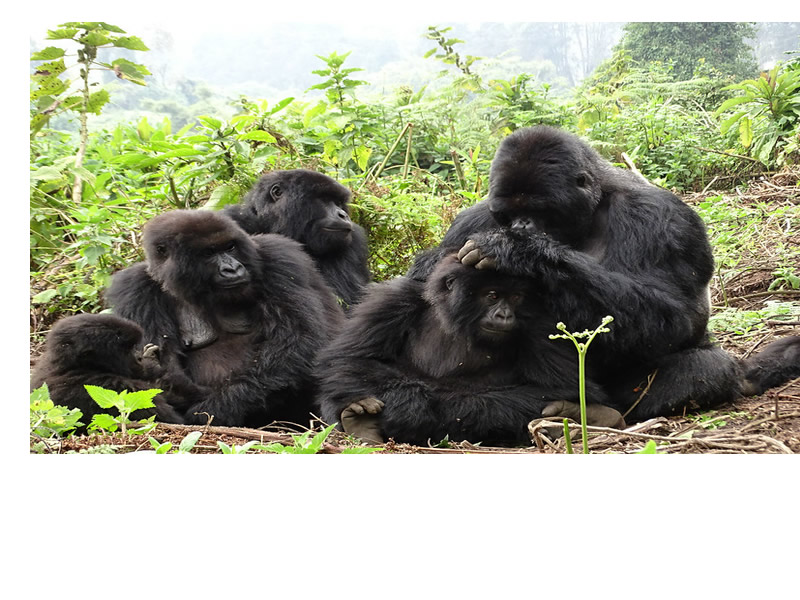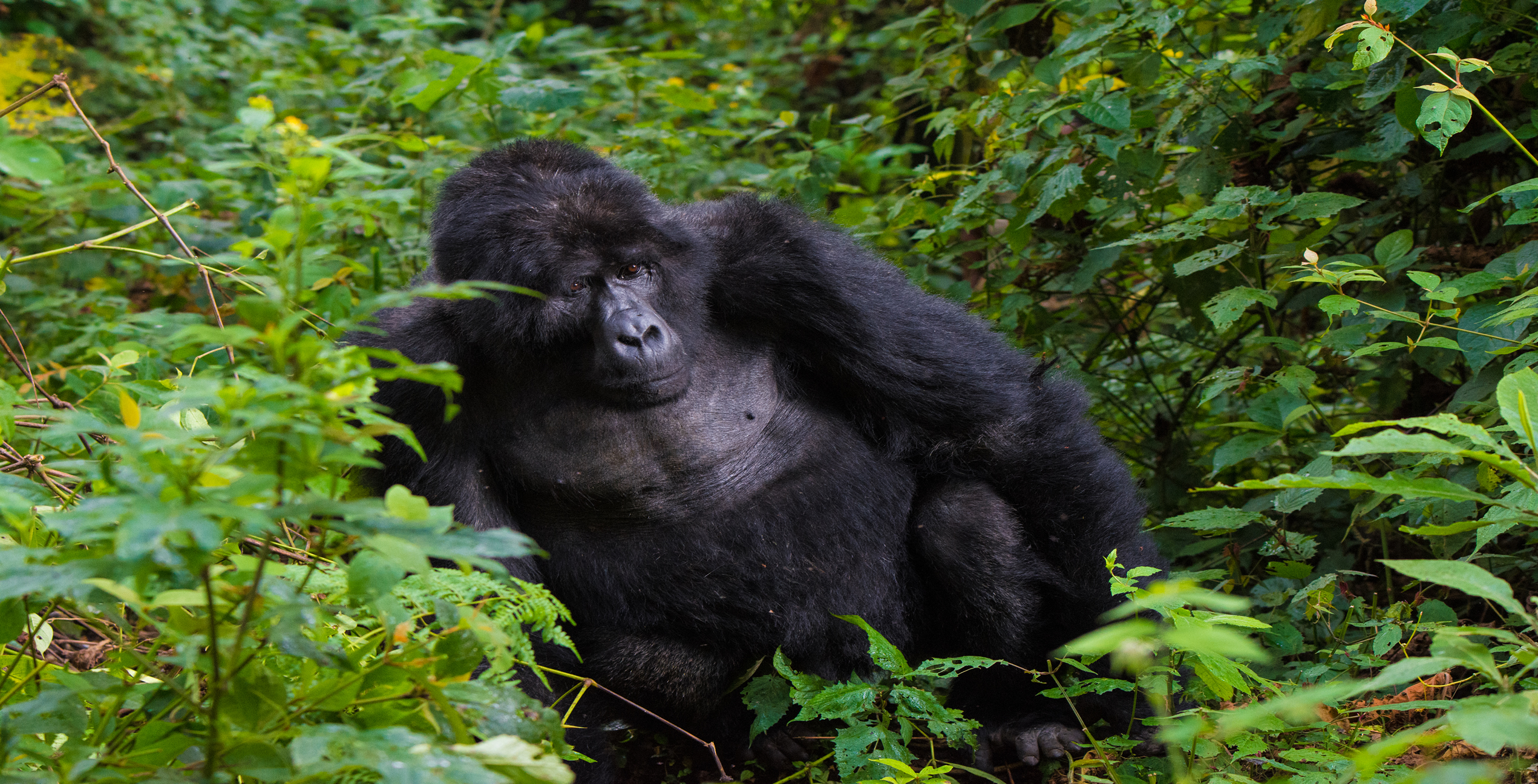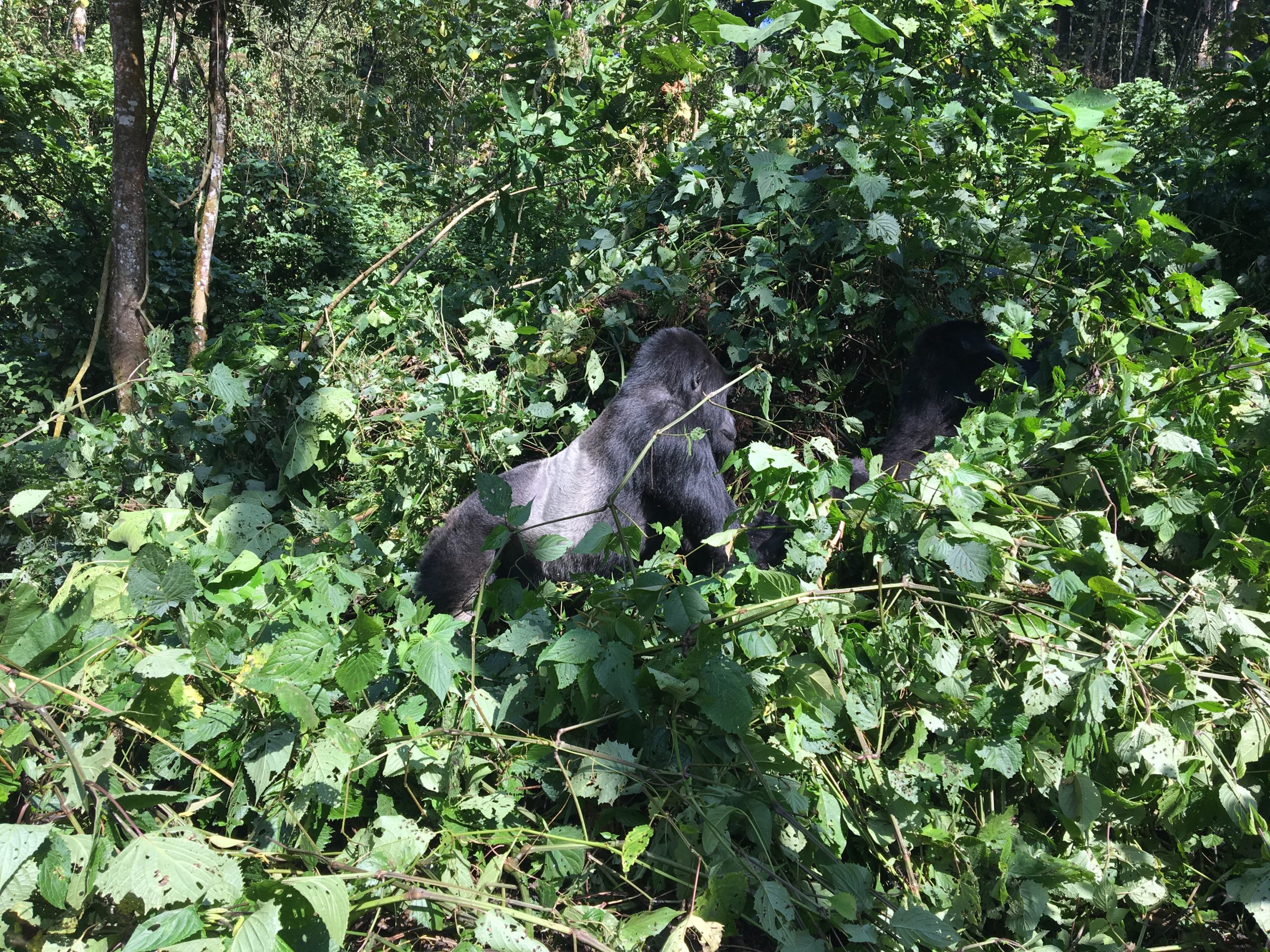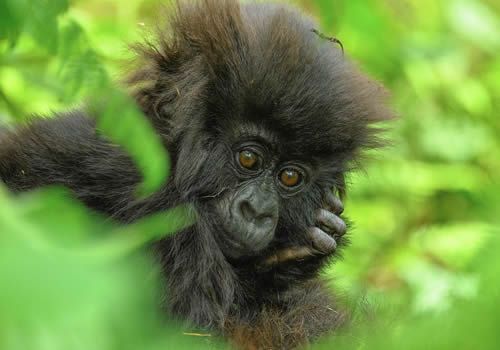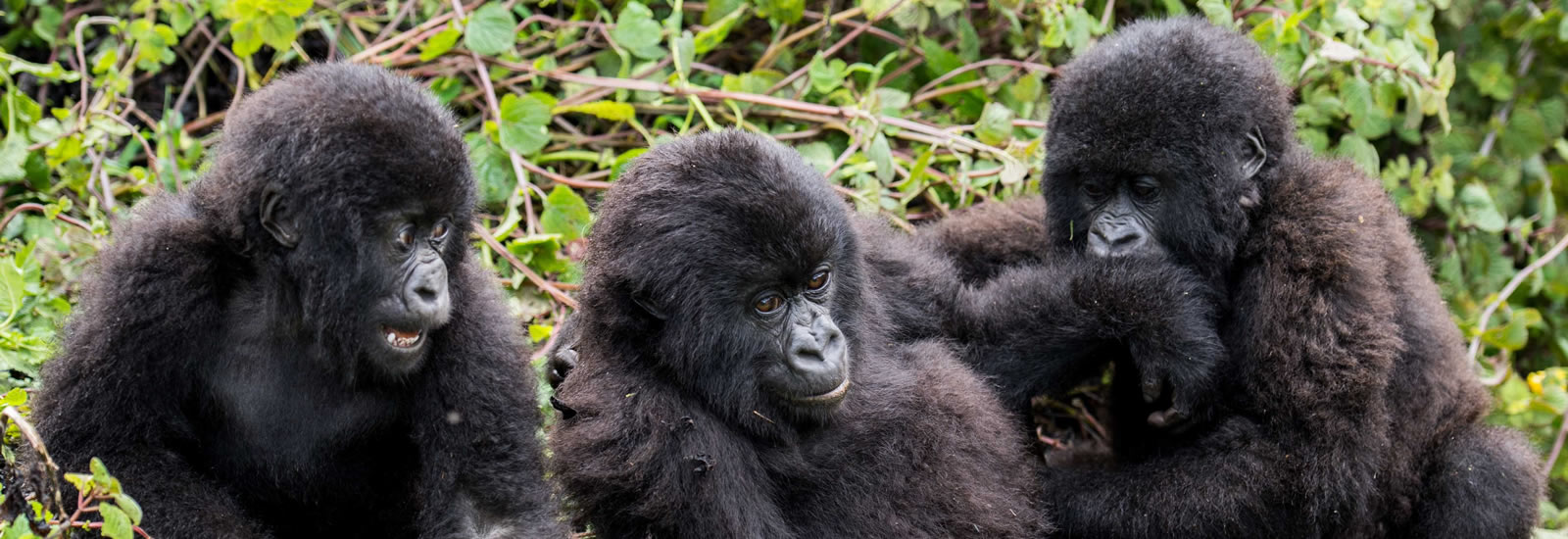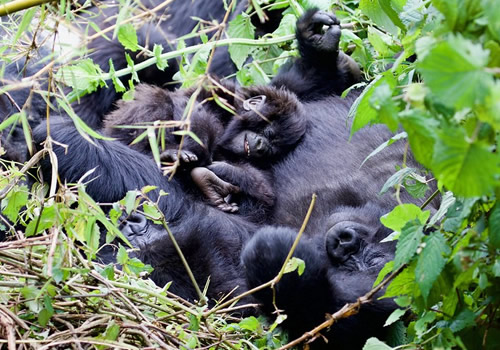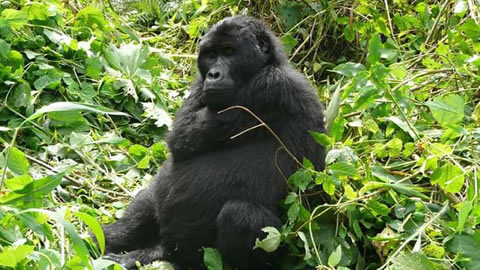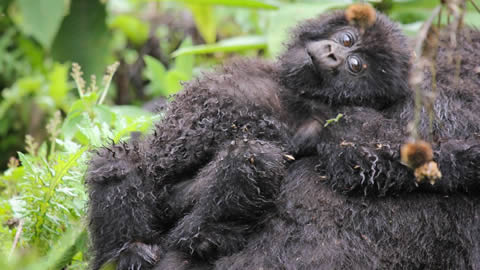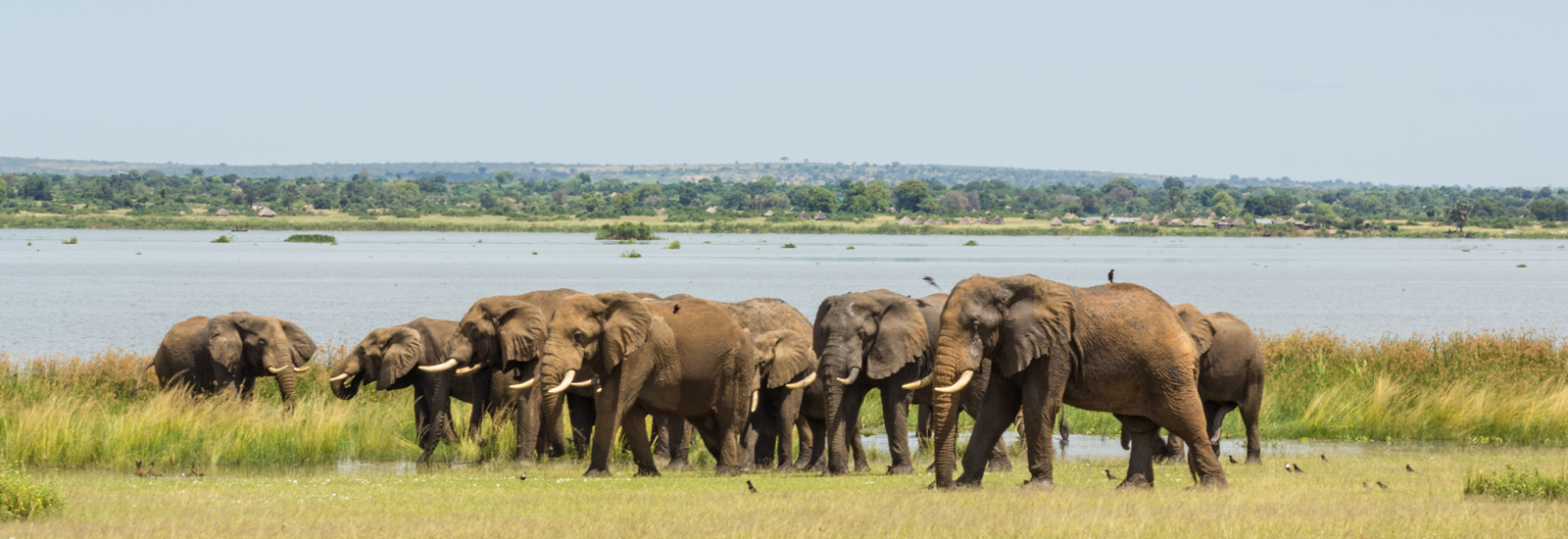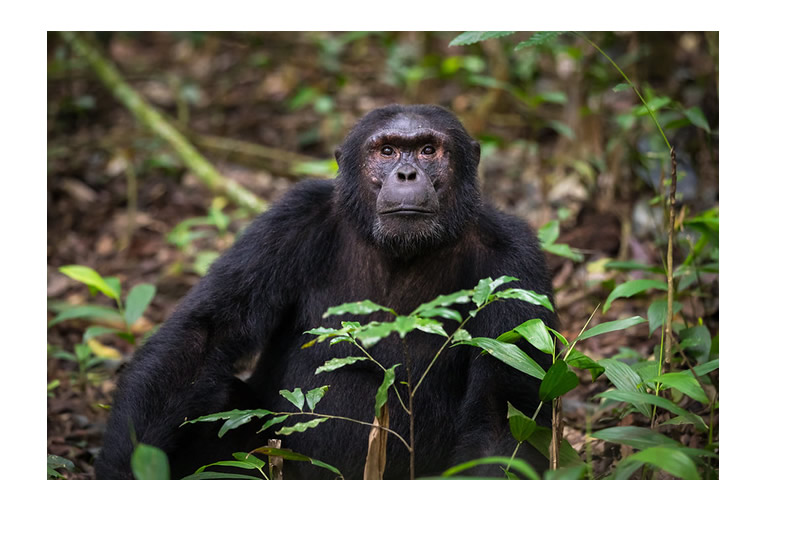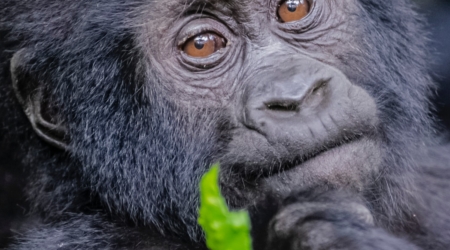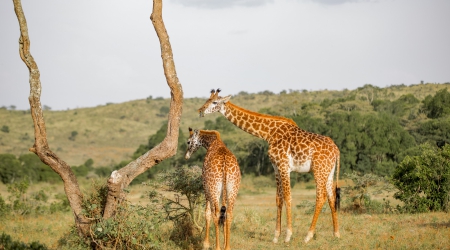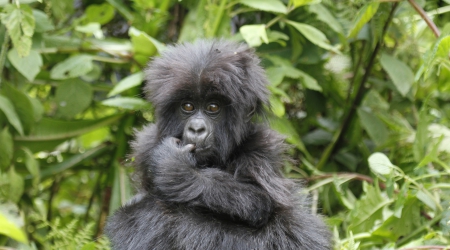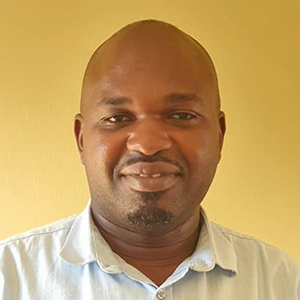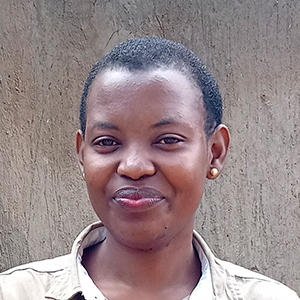Safaris in Rwanda offer a beautiful landlocked country in East Africa. It is made-up of various magnificent landforms of mountainous nature and valleys, a reason why it is called “the land of a thousand hills”. She has over the past years been referred to as the heart of Africa due to her sensational beauty and outstanding hospitality showcased by the natives. Rwanda is famous for her stunning landscapes especially the rainforests, volcanoes and lakes. It is home to Africa’s fastest growing city – Kigali which is a renowned center for culture, wildlife and heartwarming beauty.
Rwanda stands out on the African continent due to her unmatched conservation efforts, a reason why millions of traveler’s flock to the country to have a glimpse of its sensational charm.
When to go to Rwanda? (The best time to visit).
Dry seasons are the best times to embark on safaris to Rwanda. These are usually categorized into two-the long dry seasons that run from early June to September and short dry seasons that run from December to late February.
It is however important for travelers to note that Rwanda is open for visits all year round and can be explored regardless of the seasons.
Rwanda national parks.
Rwanda is a celebrated country and has over the past years gazetted national parks to help conserve the biodiversity that live within her natural bounds. These include;
Volcanoes National Park.
Volcanoes National Park is located in the northwest of Rwanda. It is characterized by mountainous terrain that is covered with lush bamboo vegetation. The National Park is home to five of the eight Virunga mountain ranges that is to say Karisimbi, Sabyinyo, Nyamuragira, Nyiragongo and Mikeno. These are covered by thick tropical rainforests especially on the bases that are a favorable habitat for a pool of primate species.
Volcanoes National Park stands out in Rwanda as the only National Park where travelers can meet gorillas. The park is home to mountain gorillas and accounts for 13 fully habituated gorilla families that are open for trekking daily. This National Park is seated on an area of approximately 160 square kilometers and is just 2 hours and 15 minutes drive away from Kigali city.
Akagera National Park.
Akagera National Park lies in the eastern provinces of Rwanda. It extends all the way to the Tanzanian border with Rwanda and is made-up of scattered woodlands, swampy vegetation, wetlands, savannah grasslands and low mountains. Akagera shelters a variety of wildlife species including zebras, Springboks, common elands, common warthogs and genets however the most iconic species are the big 5 animals that is to say lions, leopards, African Bush elephants, African buffaloes and rhinoceros. It is the only place where one can see the big 5 animals in Rwanda.
A mixture of an excursion to Akagera National Park in your safari will give you a glimpse of stunning species of flora and fauna that will leave you with a whole new and different perspective about nature. Akagera is seated on an area of approximately 1122 square kilometres making it the biggest National Park in Rwanda. It was first established as a game reserve in 1934 to protect animals that were being poached by humans.
Nyungwe National Park.
Nyungwe National Park is yet another outstanding icon of conservation in Rwanda that should be checked out. Nyungwe boasts its rich biodiversity and beautiful sceneries it showcases in the western and southern parts of Rwanda. It was first designated as a forest reserve in 1933 and was later upgraded to National Park status in 2005 by the government of Rwanda.
This National Park is seated on an area of roughly 1019 square kilometers comprised of thick rainforests, bogs, swamps, bamboo and grasslands. Nyungwe is home to a variety of primates especially chimpanzees, golden monkeys, black and white colobus monkeys and red-tailed monkeys. It is important to remember that Nyungwe is home to about 13 primates both diurnal and nocturnal. It harbors 25% of Africans total primates.
Gishwati – Mukura national park.
The Gishwati – Mukura wilderness is perched in the North West of Rwanda close to the magnificent lake Kivu. It stands out from the rest of the national parks due to its beautiful primate species it harbors in her Gishwati forest especially the chimpanzees, red-tailed monkeys, black and white colobus monkeys and the golden monkeys.
This National Park is made-up of two thick rainforests, including the smaller Mukura and the larger Gishwati hence the name Gishwati Mukura National Park. It is seated on an area of roughly 34 square kilometers characterized of hardwood trees and bamboo.
Things to do in Rwanda.
Gorilla trekking.
Gorilla trekking adventure involves moving through thick tropical rainforests in search of wild gorillas. This exciting activity in Rwanda is done only in Volcanoes National Park. Visitors on this activity trek to see mountain gorillas. Gorilla trekking starts with a briefing that is conducted by rangers to help the travelers have necessary information about what to do and what not to do while trekking.
Visitors after briefing then head to the jungle under the guidance of the experts to trek the exhilarating mountain gorillas. Travelers are allowed to spend a maximum of 60 minutes with the gentle giants up close watching them interact in their families, groom their young ones and learning several things about them.
Chimpanzee trekking.
Chimpanzee trekking is done in the thick tropical rainforests in Rwanda national parks. The most popular destinations in Rwanda for chimpanzee trekking are Nyungwe and Gishwati-Mukura National Parks.
Game drives.
Game drives are carried out to enable travelers to have extraordinary game viewing experiences. Visitors are driven in comfortable safari vehicles under the guidance of informative guides who have an impressive skill set of safaris and knowledge about most flora and fauna species in the country. They gladly share information about the species encountered, their history and composition. Game drives are usually done in Akagera National Park.
Boat cruises.
Boat cruises present a feeling of floating on magnificent water bodies in Rwanda. They are conducted in cozy equipment that improves the experiences of travelers. Boat cruises are also accompanied by guides to provide information to visitors.
They are conducted on lakes especially Ihema and Kivu, and help explorers reach deep ends of national parks and have more sightings of animals and birds.
Canopy walks.
Canopy walks present extraordinary feelings of watching the towering beautiful tree canopies and the plantations in the vicinity of the park. Travelers stand a chance of watching primates play in the forests and also spot beautiful bird species. Canopy walks are only conducted in Nyungwe National Park.
Wildlife / animals of Rwanda.
The Big 5.
The big 5 animals are such iconic creatures to watch when in the wildernesses of Rwanda. It is however important to note that in Rwanda, they can only be observed in Akagera National Park. These are usually seen on game drives that are conducted under close monitoring and guidance of professional guides and rangers.
Primates.
Rwanda hosts about 13 primate species in her dense rainforests. These include the golden monkeys, black and white colobus monkeys, red tailed monkeys, chimpanzees and L’hoest’s that can be observed in various national parks.
Birds.
Rwanda is home to 703 bird species. These inhabit the thick rainforests and savannah woodlands that are scattered all over the country. Travelers can have the opportunity to watch these impressive bird species in the various national parks.
These bird species encompass the Abyssinian ground hornbill, black bee-eaters, cinnamons, egrets, Hammerkops, African fish eagles, turacos, Hadada Ibis, African paradise flycatchers, sunbirds, lanner falcons, African darters and African jacanas.
Top attractions in Rwanda besides national parks.
Ethnographic museum.
This was formally the called is the National Museum of Rwanda. It is actually the state’s National Museum and houses a variety of historical artifacts that help summarize the history of Rwanda over the ages. Ethnographic museum is located in Butare, a nearby suburb to Kigali city. It is translated locally as “Inzu Ndangamurage”. This museum displays ethnographic, artistic, historical and archaeological artifacts with each telling a different story about the country.
Kigali city.
Kigali city is a renowned African urban center celebrated for her outstanding development and conservation efforts. It is Africa’s fastest growing city and the cleanest of all. The city elevates up to 1567 metres above sea level, seated on mount Kigali. Kigali has such a strategic location in the center of Rwanda which explains why it’s a beginning point for most adventures. Kigali city has plenty of tourist attractions within especially the BK arena, Kigali genocide museum, Convention Centre, vibrant restaurants and exceptional nightlife.
Buhanga Eco park. This stunning eco park lies in Nyakinama in Rwanda and is popular for its extraordinary bird watching experiences it offers to travelers. It is a forest with hidden treasures, plants that have medical significance and have been used traditionally since time immemorial.
Buhanga Eco park is popular for its biological and cultural significance, and the traditional attachment it has to Rwandan citizens.
Twin lakes.
The twin lakes in Rwanda are a hidden gem of adventure! They parade beautiful views of water bodies in valleys surrounded by lush vegetation. They are comprised of lake Burera and Ruhondo. The name Twin Lakes was derived from how close and similar the lakes are to each other. The two crater lakes are a perfect spot for photography and sightseeing. They are located in the northwest of Rwanda in the vicinity of Musanze town.
Iby’iwacu cultural village. Iby’iwacu cultural village is also known as the “gorilla guardians’ village”. It is located in the outskirts of Volcanoes National Park in Kinigi, Musanze district in the north of Rwanda. It is made-up of individuals who are committed to conserving the heritage of Rwanda and also ensure that the mountain gorillas and their habitat are not tampered with by uncivilized individuals.
They showcase the Rwandan culture through their ways of life, dress code, culinary and dancing styles. The people at a cultural village perform series of Kinyarwanda dances to keep the guests entertained and ensure that their legacy lives on.
Nyamata and Ntarama memorial sites.
These two stunning places are archives for artifacts that tell stories about the bloody 1994 genocide that claimed thousands of lives in Rwanda. Ntarama was formerly a church but was converted into a genocide memorial site on 14th of April 1995 dedicating it to the 5000 lives that were lost at the hands of merciless butchers. The sites today celebrate the lives of the innocent Rwandese that were lost and serve as an attraction.
Facts about Rwanda.
Rwanda hosts Kigali car free days.
They are aimed at ensuring that the country gets clean air and are usually hosted on the 1st and 3rd Sundays of every month. There are no cars expected on the streets throughout the country on those days.
Community work days.
They are locally referred to as Umuganda which translates to “national day for community work” that is usually done on the last Saturday of every month. Citizens gather to participate in cleaning processes of the streets and every area that is considered dirty. Such community works help ensure that the city is clean.
Rwanda is home to endangered mountain gorillas.
The mountain gorillas in Rwanda can be trekked in the breathtaking Volcanoes National Park. There are 13 gorilla families that are open for activities.
Rwanda has four official languages.
Citizens in Rwanda consider 4 languages official and use them in business transactions. However, these languages serve in different spheres of life for example English and French are normally used in education whereas Kiswahili and Kinyarwanda are used locally in the markets and for informal businesses.
Rwanda harbors central Africa’s largest protected wetland.
This wetland lies in the perimeters of Akagera National Park which is the largest national park in the country. The wetland is a renowned Ramsar site and is habitat to a variety of biodiversity.
Rwanda is a staunch women empowerment nation.
This is evident in various walks of life especially in the parliament where women occupy more than half of the parliament seats.
Safety in Rwanda.
Rwanda is generally a safe country to visit. It is protected by the well-trained Rwanda Defense Forces army that take on the responsibility to protect every individual in the perimeters of the country. They are deployed all over key areas in the country especially in the cities to curb crime especially the muggings and robbery on the streets and in key areas especially the banking sector.
Rwanda safari tips.
Do not litter.
Travelers embarking on Rwandan safaris are advised to not litter the environment. Responsible travel is something that is not taken lightly in the country and therefore visitors should endeavor to travel with trash cans in their cars to keep track of their garbage.
Dress appropriately.
Travelers visiting Rwanda should endeavor to dress appropriately for every activity they are embarking on to boost their comfort while on the safari. Those embarking on safaris to Akagera National Park for game drives should endeavor to put on light clothes and those embarking on gorilla trekking should dress in long sleeved shirts, trousers, carry jackets and hiking boots to ensure that they walk through the jungle with no hardships.
Photography and videography of military buildings and property is highly prohibited in the country. Photographers should always keep checking on what they are shooting when in the country.
Yellow fever vaccination.
The yellow fever vaccination is a requirement for every traveler entering the country and so should always be checked out for travelers embarking on explorations in Rwanda destinations.
Carry your necessary documents.
Travelers are advised to carry their documents whenever they are in the move, they shouldn’t put them far since they are always checked by the security personnel.
Where to trek Rwanda gorillas?
Gorilla trekking in Rwanda only takes place in Volcanoes National Park. Volcanoes National Park lies in the northwest of Rwanda and is a home to 13 gorilla families. All these are fully habituated and open for gorilla trekking.
The other three provide gorilla habituation experiences which actually exceed the trekking adventure with the gentle giants. The activity is presided over by rangers and researchers who provide information about the history and composition of mountain gorillas.
Rwanda gorilla families.
Sabyinyo.
Sabyinyo gorilla family was named after Mount. Sabyinyo. This family was first sighted near the bases of the mountain hence the name. Sabyinyo means old man’s teeth in English. It was led by a silverback called Sabyinyo who died. This exciting family is now led by a giant silverback called Guhonda. It is comprised of seven members including 1 silverback, 3 females, 2 youthful gorillas and an infant.
Susa.
This gorilla family derives its name from Susa river in the magnificent Volcanoes National Park. Its family is also known as Susa A. The family used to chill on the banks of the river and that’s why it was named after it. It is famous because it was studied by Diane Fossey at Karisoke Research Centre. It is by far the hardest group to trek in Volcanoes National Park. Susa has 28 members currently with three silverbacks as well as twins that is to say Impano and Byishimo.
Karisimbi.
Karisimbi, also known as Susa B is yet another exciting family in Volcanoes National Park. It was first seen at the base of mount Karisimbi in the National Park which is why it took up its name. It is led by a dominant silverback called Nyagakangaga. It is comprised of 11 members including 4 silverbacks, 1 adult female, a blackback and two infants.
Umubano.
Umubano family stands out in the jungle due to its members’ astonishing coexistence. The name Umubano was derived from the peaceful demeanor of the members of this gorilla family. Umubano is a Kinyarwanda to mean neighborliness. This family is comprised of 13 members comprised of 1 silverback, 1 sub adult, 6 infants and 3 adult females.
Amahoro.
Amahoro is comprised of 17 members. The family is renowned for its peaceful character that makes it a favorite family to trek among travelers. Amahoro translates to peaceful in English. This family is comprised of 1 silverback, 2 blackbacks, 5 juveniles, 5 adult aunties and 4 young gorillas. It is led by Ubumwe, the giant silverback.
Kwitonda.
Kwitonda gorilla family gets its name from their first dominant silverback. The family today is led by Akarevuro who was a juvenile during the reign of Kwitonda. There are other two silverbacks in the group, including Magumu and Kigoma. Kwitonda died at 40 and left the group at a population of 28 where it stands currently.
Hirwa.
Hirwa translates as “lucky one” in English. The family was created by Munyiga who had misunderstandings with silverbacks in Susa family and broke off to create his own. Hirwa is made-up of 13 individuals including 1silverback, 2 sub adults, 2 blackbacks, 2 adult females, 3 juveniles and 3 infants.
Bwenge.
Bwenge is another exhilarating family there to trek in Volcanoes National Park. It is one of the most popular families due to the simplicity in trekking it. The word Bwenge means wisdom which is portrayed by the members within this family. Bwenge is made-up of 11 members with one silverback. This group lost six infants in a horrible incident in the jungle. It is famous in Volcanoes National Park because it was featured in the popular viewers choice wildlife documentary – Gorillas in the mist.
Agashya.
Agashya family is one of the biggest families in Volcanoes National Park. It is also known as group 13 and is made-up of 25 individuals. It is comprised of 1 silverback, 12 females, 7 babies and 3 juveniles. Agashya means news in English and was named to them because of their dominant silverback called Agashya who preceded Nyakairima.
Ugyenda.
Ugyenda is a Kinyarwanda word to mean “on the move” in English. The family was named so because of their unending wanderings in the Volcanoes jungle. Ugyenda is made-up of 11 members with two silverbacks. This gorilla family is usually found near the mount Karisimbi areas.
Muhoza.
Muhoza group is yet another exciting gorilla family also found in the perimeters of Volcanoes National Park. It is made-up of 17 members that is to say 1 silverback, 7 adult females, 1 sub adult, 1 juvenile and 7 infants. Muhoza group is led by Marambo, a courageous silverback who grabbed 2 adult females from Hirwa group.
Titus.
Titus gorilla group is yet another exciting family available to trek in Volcanoes National Park. This exciting family is one of the oldest groups in the National Park and was originally meant for research purposes only. The group was led by Titus a silverback who was born in the days of Dian Fossey’s comprehensive research at Karisoke.
Isimbi.
Isimbi group is renowned for their outstanding endurance of several hardships in the jungle. They have been through several fights with other families in the park. Many silverbacks have died in their fights as they get replaced from the times of Getty to Muterengere. This group is currently comprised of 16 individuals including 1 silver buck, 4 adult females, 7 juveniles and 4 infants.
Rwanda gorilla permits.
Rwanda gorilla permits can be obtained through registered tour operators who go ahead to book the favorable dates for the travelers to go for the gorilla trekking activity. Rwanda gorilla permits are priced at $1500 per person per trek.
Gorilla trekking in Rwanda Vs Uganda.
The Rwanda gorilla trekking experience takes visitors through mainly bamboo forests while the Ugandan experience is through dense tropical rainforests.
Uganda has 2 gorilla national parks, including Bwindi impenetrable and Mgahinga National Park as compared to Rwanda with only one, Volcanoes National Park. Uganda has quite a higher number of gorillas than Rwanda. Uganda hosts over 50% of the world’s total mountain gorillas.
Rwanda targets mainly luxury travelers which is not the case in Uganda since Uganda can be up afforded by both mid range and budget gorilla trekkers.
Other things to see in Volcanoes National Park.
Musanze caves.
Musanze caves showcase the beauty of an underground space that was naturally formed. They are too small to accommodate the size of a grown human being yet so interesting to visit! The caves provide beautiful scenery that is good for photography. They have interesting folklore associated with them, providing more reasons why you should check them out when in Volcanoes National Park.
Golden monkey trekking.
Volcanoes National Park is home to a variety of primates and golden monkeys are no exception. These can be trekked in the thick rainforests and in the mountain bases in the Virunga conservation area. When encountered, travelers are allowed to spend an hour observing them enjoy their wild life in the untouched habitat.
Volcano hiking.
Hiking is yet another exciting activity to lookout for when in Volcanoes National Park. Volcanoes National Park has five extinct volcanoes that offer extraordinary hiking experiences. Visitors get to challenge the ascent of the volcanoes surrounded by the breathtaking views of the other mountain ranges, lush flora and fauna.
Dian Fossey grave hike.
The Dian Fossey grave is an attraction in Volcanoes National Park that should be checked out for travelers looking for sensational experiences. The hike to the celebrated conservationist’s grave takes visitors through the magnificent attractions on the slopes of Mount. Karisimbi.
Visitors get to learn from Dian Fossey’s history and always carry on her legacy of conservation and peaceful coexistence with animals.


